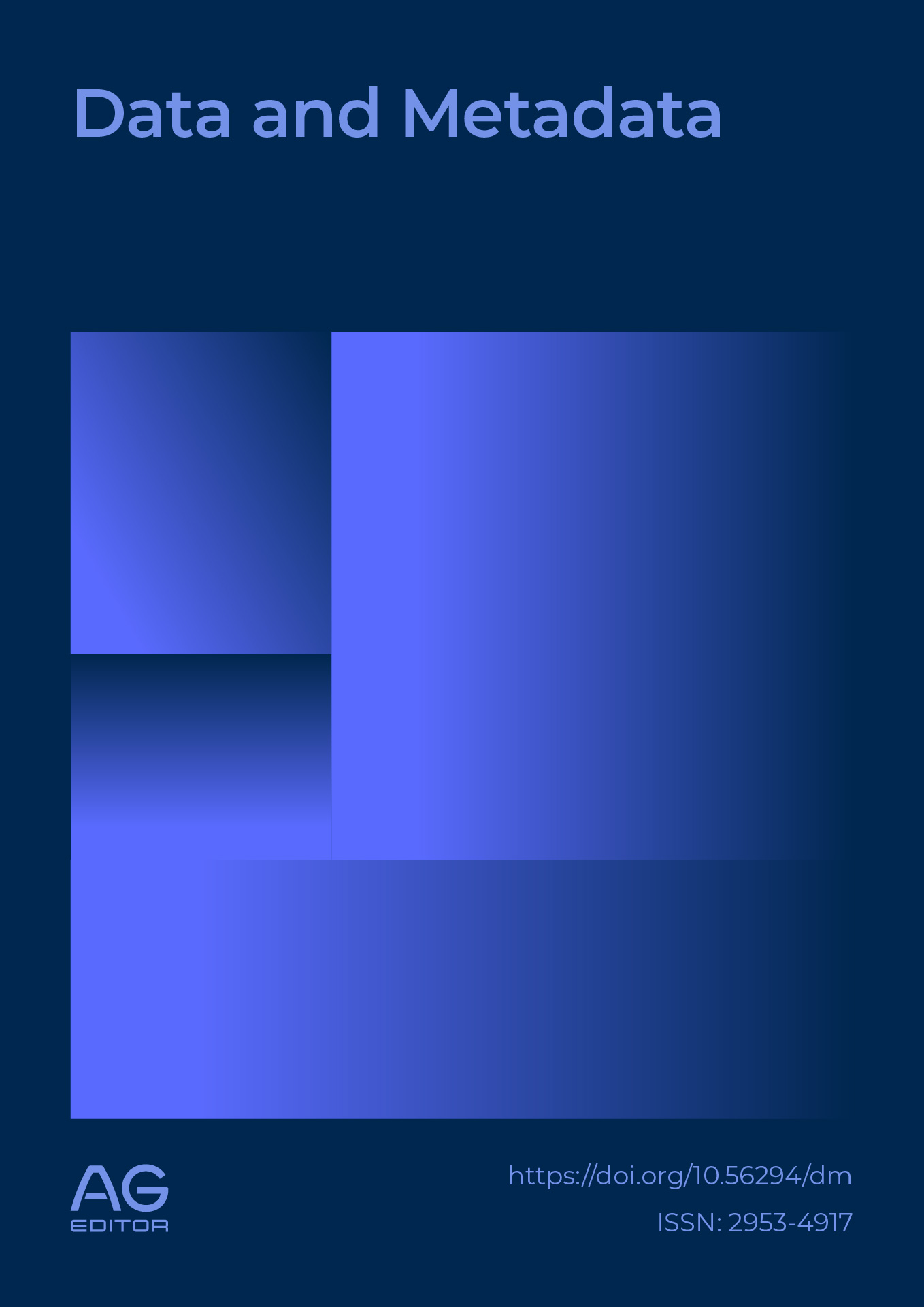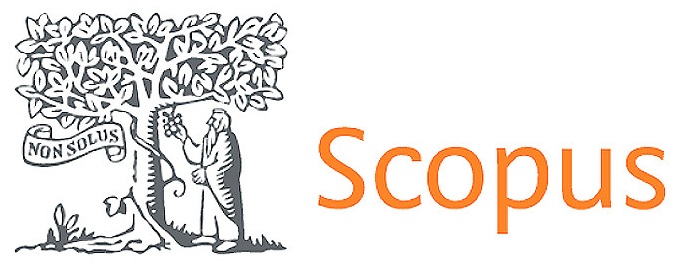A Fuzzy Logic-Based Decision Support System for Predicting Entrepreneurial Intention Among Textile Students
DOI:
https://doi.org/10.56294/dm20251010Keywords:
Entrepreneurial Intention, Fuzzy Logic, Higher Education, Textile Sector, Educational Recommendation SystemAbstract
This article presents a fuzzy logic-based decision support system, which functions as a predictive model for assessing and guiding entrepreneurial intention among Moroccan university students in the textile sector. The model used four key variables, namely Desirability, Self-Concept, University Context, and Feasibility. These latter and their influence were identified through a previous ANN model. Fuzzy memberships functions were designed, and 81 expert validated rules were constructed for the fuzzy model. The model provided entrepreneurial scores based on the students’ inputs and was tested on a new 40 student survey responses. Key findings highlighted that desirability and self- concept are critical drivers of entrepreneurial intention, and the results showed an alignment with expert judgments and theoretical models. Furthermore, the model provided personalised recommendations for both students and university and makes clear contributions to both theoretical and practical advancements in the entrepreneurship studies.
References
1. Bell R. Predicting entrepreneurial intention across the university. Education and Training. 2019 Aug 13;61(7–8):815–31. DOI: https://doi.org/10.1108/ET-05-2018-0117
2. O’Gorman C. Entrepreneurial Intentions and Entrepreneurial Behaviour. Entrepreneurial Behaviour: Individual, Contextual and Microfoundational Perspectives [Internet]. 2019 Jan 1 [cited 2025 Apr 2];17–37. Available from: https://link.springer.com/chapter/10.1007/978-3- 030-04402-2_2 DOI: https://doi.org/10.1007/978-3-030-04402-2_2
3. Oulhou H, Ibourk A. Perceived effectiveness of entrepreneurship education, entrepreneurial mindset, entrepreneurial self-efficacy and entrepreneurial intention among Moroccan university students: A correlational study. Social Sciences & Humanities Open. 2023 Jan 1;8(1):100719. DOI: https://doi.org/10.1016/j.ssaho.2023.100719
4. Pérez-Macías N, Fernández-Fernández JL, Vieites AR. Analyzing the past to prepare for the future: a review of literature on factors with influence on entrepreneurial intentions. Journal of International Entrepreneurship [Internet]. 2022 Mar 1 [cited 2025 Mar 9];20(1):52–114. Available from: https://link.springer.com/article/10.1007/s10843-021-00289-5 DOI: https://doi.org/10.1007/s10843-021-00289-5
5. Bird B. Implementing Entrepreneurial Ideas: The Case for Intention. Academy of Management Review. 1988 Jul;13(3):442–53. DOI: https://doi.org/10.2307/258091
6. Ajzen I. From Intentions to Actions: A Theory of Planned Behavior. Action Control [Internet]. 1985 [cited 2025 Apr 9];11–39. Available from: https://link.springer.com/chapter/10.1007/978-3-642-69746-3_2 DOI: https://doi.org/10.1007/978-3-642-69746-3_2
7. Ajzen I. The theory of planned behavior. Organ Behav Hum Decis Process. 1991 Dec 1;50(2):179–211. DOI: https://doi.org/10.1016/0749-5978(91)90020-T
8. Shapero A, Sokol L. The Social Dimensions of Entrepreneurship [Internet]. 1982 [cited 2025 Apr 9]. Available from: https://papers.ssrn.com/abstract=1497759
9. McMullen JS, Shepherd DA. Entrepreneurial Action And The Role Of Uncertainty In The Theory Of The Entrepreneur. https://doi.org/105465/amr200619379628 [Internet]. 2006 Jan 1 [cited 2025 Apr 9];31(1):132–52. Available from: https://journals.aom.org/doi/abs/10.5465/amr.2006.19379628 DOI: https://doi.org/10.5465/amr.2006.19379628
10. Tounés A. L’Intention entrepreneuriale : une recherche comparative entre des étudiants
suivant des formations en entrepreneuriat (bac+5) et des étudiants en DESS CAAE. 2003.
11. Autio E, H. Keeley R, Klofsten M, G. C. Parker G, Hay M. Entrepreneurial Intent among Students in Scandinavia and in the USA. Enterprise and Innovation Management Studies. 2001 May;2(2):145–60. DOI: https://doi.org/10.1080/14632440110094632
12. Lent RW, Brown SD, Hackett G. Social cognitive career theory. In: D. Brown, editor. Career Choice and Development [Internet]. 4th ed. Jossey-Bass; 2002. Available from: https://www.researchgate.net/publication/306145850
13. Liñán F, Fayolle A. A systematic literature review on entrepreneurial intentions: citation, thematic analyses, and research agenda. International Entrepreneurship and Management
Journal 2015 11:4 [Internet]. 2015 Jan 23 [cited 2025 Mar 9];11(4):907–33. Available from: https://link.springer.com/article/10.1007/s11365-015-0356-5
14. Kang Z. Artificial Intelligence Network Embedding, Entrepreneurial Intention, and Behavior Analysis for College Students’ Rural Tourism Entrepreneurship. Front Psychol. 2022 May 27;13:843679. DOI: https://doi.org/10.3389/fpsyg.2022.843679
15. Abia N, Sadeq H, Medarhri I, Soulhi A. Modeling Entrepreneurial Intentions in Moroccan Higher Education: Bridging Academia and Entrepreneurship with Artificial Neural Networks. Data and Metadata. 2025;4. DOI: https://doi.org/10.56294/dm2025722
16. Hassija V, Chamola V, Mahapatra A, Singal A, Goel D, Huang K, et al. Interpreting Black- Box Models: A Review on Explainable Artificial Intelligence. Cognit Comput [Internet]. 2024 Jan DOI: https://doi.org/10.1007/s12559-023-10179-8
1 [cited 2025 Mar 15];16(1):45–74. Available from: https://link.springer.com/article/10.1007/s12559-023-10179-8
17. Zadeh LA. Fuzzy sets. Information and Control. 1965 Jun 1;8(3):338–53. DOI: https://doi.org/10.1016/S0019-9958(65)90241-X
18. Garrido A. A Brief History of Fuzzy Logic. Brain (Bacau) [Internet]. 2012 [cited 2025 Mar 11];3(1):71–7. Available from: https://brain.edusoft.ro/index.php/brain/article/view/308
19. Haris N, FA Rahman. A study on application of fuzzy methods in entrepreneurship domain. International Journal of Advanced and Applied Sciences [Internet]. 2017 [cited 2025 Apr 2]; Available from: https://www.researchgate.net/profile/Norhaidah- Haris/publication/321434484_A_study_on_application_of_fuzzy_methods_in_entrepreneurs hip_domain/links/5c89c700a6fdcc38175271a5/A-study-on-application-of-fuzzy-methods-in- entrepreneurship-domain.pdf
20. Hernández AB, Hidalgo DB, Hernández AB, Hidalgo DB. Fuzzy Logic in Business, Management and Accounting. Open Journal of Business and Management [Internet]. 2020 Oct DOI: https://doi.org/10.4236/ojbm.2020.86157
13 [cited 2025 Mar 11];8(6):2524–44. Available from: https://www.scirp.org/journal/paperinformation?paperid=104159
21. Iklassova K, Aitymova A, Kopnova O, Sarzhanova A, Abildinova G, Kushumbayev A, et al. CONSTRUCTION OF A FUZZY MODEL FOR MANAGING THE PROCESS OF FORMING IT-
COMPETENCES. Eastern-European Journal of Enterprise Technologies [Internet]. 2024 Apr 19 [cited 2025 Apr 2];129(3):32.
22. Singh H, Gupta MM, Meitzler T, Hou ZG, Garg KK, Solo AMG, et al. Real-life applications of fuzzy logic. madangupta.com [Internet]. 2013 [cited 2025 Mar 11];2013. Available from: https://www.madangupta.com/pages/info/mmg/paper/RJ/RJ-2013-02.pdf DOI: https://doi.org/10.1155/2013/581879
23. El Bakkali M, Messnaoui R, Elkhaoudi M, Cherkaoui O, Rivenq Menhaj A, Soulhi A. PREDICTING THE WEAVABILITY OF A NEW WOOLLEN FABRIC USING FUZZY LOGIC. J Theor Appl Inf Technol. 2024 Dec 1;102(23):8740–53.
24. Messnaoui R, El Bakkali M, Elkhaoudi M, Cherkaoui O, Soulhi A. Predicting the tensile strength of a new fabric using artificial intelligence (fuzzy logic). Data and Metadata [Internet]. 2025 Jan 24 [cited 2025 Apr 20];4:666–666. Available from: https://dm.ageditor.ar/index.php/dm/article/view/666 DOI: https://doi.org/10.56294/dm2025666
25. El Bakkali M, Messnaoui R, Cherkaoui O, Soulhi A. PREDICTING THE DIFFICULTY OF WEAVING A NEW FABRIC USING ARTIFICIAL INTELLIGENCE (FUZZY LOGIC). J Theor Appl Inf
Technol [Internet]. 2023;31:24. Available from: www.jatit.org
26. Messnaoui R, El Bakkali M, Soulhi A, Cherkaoui O. APPLICATION OF FUZZY LOGIC IN WEAVING PROCESS: A SYSTEMATIC LITERATURE REVIEW. J Theor Appl Inf Technol [Internet].
2023;15(23). Available from: www.jatit.org
27. Mortada A, Soulhi A. A DECISION-MAKING MODEL BASED ON FUZZY LOGIC TO SUPPORT MAINTENANCE STRATEGIES AND IMPROVE PRODUCTION LINES PRODUCTIVITY AND
AVAILABILITY. J Theor Appl Inf Technol [Internet]. 2023;15(13). Available from: www.jatit.org
28. Mortada A, Soulhi A. A DECISION-MAKING MODEL FOR QUALITY IMPROVEMENT USING
FUZZY LOGIC. J Theor Appl Inf Technol [Internet]. 2023;15(13). Available from: www.jatit.org
29. Mortada A, Soulhi A. A FUZZY LOGIC MODEL FOR ENSURING CUSTOMER SATISFACTION AND PREVENTING COMPLAINTS ABOUT QUALITY DEFECTS. J Theor Appl Inf Technol [Internet].
2023;31(14). Available from: www.jatit.org
30. El Khaoudi M, El Bakkali M, Messnaoui R, Cherkaoui O, Soulhi A. Literature review on artificial intelligence in dyeing and finishing processes. Data and Metadata. 2024 Feb 8;3. DOI: https://doi.org/10.56294/dm2024360
31. Soulhi A, Guedira S, Alami N eddine. Decision-making automation fuzzy decision-making in industry. In: Proceedings of the 8th WSEAS international conference on Artificial intelligence, knowledge engineering and data bases. 2009. p. 181–5.
32. Arfi B. Linguistic Fuzzy Logic Methods in Social Sciences. 2010 [cited 2025 Apr 2];253. Available from: http://link.springer.com/10.1007/978-3-642-13343-5 DOI: https://doi.org/10.1007/978-3-642-13343-5_5
33. Murthy P. Fuzzy Logical Techniques in Social Science Research - Application and Adoption. SSRN Electronic Journal [Internet]. 2019 May 25 [cited 2025 Mar 11]; Available from: https://papers.ssrn.com/abstract=3394030 DOI: https://doi.org/10.2139/ssrn.3394030
34. Olumekor M. Fuzzy Methods in Entrepreneurship Research. Journal of Entrepreneurship [Internet]. 2024 May 1 [cited 2025 Mar 11];33(2):365–92. Available from: https://journals.sagepub.com/doi/full/10.1177/09713557241255415 DOI: https://doi.org/10.1177/09713557241255415
35. Rijati N, Purwitasari D, … SSIJ of, 2020 undefined. A decision making and clustering method integration based on the theory of planned behavior for student entrepreneurial potential mapping in Indonesia. Journal of Intelligent Engineering and Systems, [Internet]. [cited 2025 Apr 2]; Available from: https://www.academia.edu/download/83404803/ijies2020.0831.pdf
36. Kettunen S, Joensuu-Salo S, Sorama K. Supporting female student’s entrepreneurial intention factors. 2017 [cited 2025 Apr 2]; Available from: https://www.theseus.fi/bitstream/handle/10024/160275/Kettunen_Supporting.pdf?sequenc e=1
37. Yue J. Application of fuzzy control algorithm in college students’ personal career planning and entrepreneurship. Journal of Computational Methods in Sciences and Engineering [Internet]. 2024 Jun 1 [cited 2025 Mar 4];24(3):1631–47. Available from: https://journals.sagepub.com/doi/full/10.3233/JCM-247196 DOI: https://doi.org/10.3233/JCM-247196
38. Zhang P, Wang DD, Owen CL. A study of entrepreneurial intention of university students. Entrepreneurship Research Journal [Internet]. 2015 Jan 1 [cited 2025 Mar 4];5(1):61–82. Available from: https://www.degruyter.com/document/doi/10.1515/erj-2014-0004/html DOI: https://doi.org/10.1515/erj-2014-0004
39. Gieure C, Benavides-Espinosa M del M, Roig-Dobón S. Entrepreneurial intentions in an international university environment. International Journal of Entrepreneurial Behaviour and Research. 2019 Nov 7;25(8):1605–20. DOI: https://doi.org/10.1108/IJEBR-12-2018-0810
40. Nikou S, Brännback M, Carsrud AL, Brush CG. Entrepreneurial intentions and gender: pathways to start-up. International Journal of Gender and Entrepreneurship. 2019 Aug 20;11(3):348–72. DOI: https://doi.org/10.1108/IJGE-04-2019-0088
41. Díaz-Casero JC, Fernández-Portillo A, Sánchez-Escobedo MC, Hernández-Mogollón R. The Influence of University Context on Entrepreneurial Intentions. Innovation, Technology and Knowledge Management [Internet]. 2017 [cited 2025 Mar 9];65–81. Available from: https://link.springer.com/chapter/10.1007/978-3-319-47949-1_5 DOI: https://doi.org/10.1007/978-3-319-47949-1_5
42. Khefacha I, Belkacem L. Modeling entrepreneurial decision-making process using concepts from fuzzy set theory. Journal of Global Entrepreneurship Research 2015 5:1 [Internet]. 2015 Jul 23 [cited 2025 Mar 4];5(1):1–21. Available from: https://link.springer.com/article/10.1186/s40497-015-0031-x DOI: https://doi.org/10.1186/s40497-015-0031-x
43. Rawandale SA, Kalbande VN, Bodhe A, Rawandale U, Patil R. Estimating the Employment Opportunity of Engineering Students with the Aid of Fuzzy Logic Controller. International Journal of Engineering Trends and Technology. 2022 Mar 1;70(3):319–26. DOI: https://doi.org/10.14445/22315381/IJETT-V70I3P236
44. Huseyn A, Shafizade E, … SHJ of E, 2023 undefined. The impact of digitalization on the income of authors of educational products: Analysis of the influence of factors based on fuzzy logic. ieeca.orgA Huseyn, E Shafizade, S Humbatova, T HuseynovJournal of Eastern European DOI: https://doi.org/10.15549/jeecar.v10i7.1371
and Central Asian Research (JEECAR), 2023•ieeca.org [Internet]. 2023 [cited 2025 Apr 2];10(7).
Available from: https://ieeca.org/journal/index.php/JEECAR/article/view/1371
45. Kaur R, Sciences ASA and A in M, 2019 undefined. Fuzzy logic: an overview of different application areas. mililink.com [Internet]. 2019 [cited 2025 Mar 11];18(8):677–89. Available from: https://www.mililink.com/upload/article/812817069aams_vol188_june_2019_a9)p677- 689_ramandeep_kaur_and_amar_singh.pdf
46. El Bakkali M, Messnaoui R, Elkhaoudi M, Cherkaoui O, Soulhi A. Predicting saturation for a new fabric using artificial intelligence (fuzzy logic): experimental part. Data and Metadata. 2024 Feb 8;3. DOI: https://doi.org/10.56294/dm2024251
47. Madanda V, Sengani F, Mulenga F. Applications of fuzzy theory-based approaches in tunnelling geomechanics: A state-of-the-art review. Min Metall Explor [Internet]. 2023 Jun 1 [cited 2025 Apr 2];40(3):819–37. Available from: https://link.springer.com/article/10.1007/s42461-023-00767-5 DOI: https://doi.org/10.1007/s42461-023-00767-5
48. Messnaoui R, Bakkali M El, Elkhaoudi M, Soulhi A, Cherkaoui O. Validation by experimental study the relationship between fabric tensile strength and weave structures. AUTEX Research Journal [Internet]. 2024 Jan 1 [cited 2025 Apr 20];24(1). Available from: https://www.degruyterbrill.com/document/doi/10.1515/aut-2024-0018/html. DOI: https://doi.org/10.1515/aut-2024-0018
Downloads
Published
Issue
Section
License
Copyright (c) 2025 Nora Abia, Hanane Sadeq, Ibtissam Medarhri, Aziz Soulhi (Author)

This work is licensed under a Creative Commons Attribution 4.0 International License.
The article is distributed under the Creative Commons Attribution 4.0 License. Unless otherwise stated, associated published material is distributed under the same licence.




